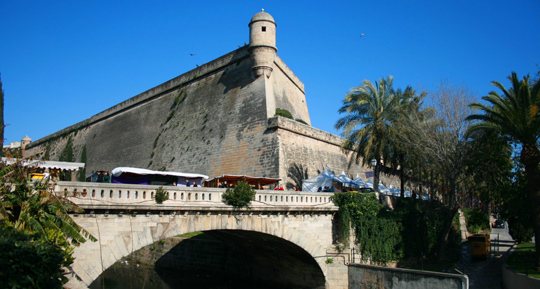
The bastions didn’t appear in the fortified perimeter until it was necessary to defend the city by artillery, in the 16th century, the boats that arrived in Palma fired volleys that were returned by the bastions.
Now, 400 years later, they are no longer in use for this purpose.
The bastion of Sant Pere is home to the Museu D’Art Modern y Contemporani de Palma.
Erected between 1575 and 1578, during 300 years it survived as a place of special interest for the military defense of the city. In 1952, it stopped being a reference for strategic defense. In 1963 there was a partial demolition and it was immediately rebuilt. Today it is one of the most significant and visited history-art monuments.
The development of the Princep bastion, on the Llevant wall, has been more complex. In the 40’s the state built the over bastion of the Caja de Reclutas (box of recruits) a military building that contributed largely to the deterioration of the enclosure.
Since 1985 its renovation has been key consideration, the goal, to turn it into an enormous balcony which opens the city to the sea.
Las antiguas murallas de Palma fueron derribadas hace décadas, pero quedan algunos valiosos vestigios que se han integrado como elementos destacados del nuevo modelo de ciudad: los baluartes de Sant Pere y del Príncep, en plena fachada marítima. Son los únicos supervivientes de los trece que, junto con ocho puertas, jalonaban la antigua muralla renacentista que delimitaba la Palma anterior al Ensanche.

























